Good seeing...
8/16/2023. When the seeing indicators on the Clear Sky Chart are navy blue, I am compelled to go have a look. These are the best 100 of 1,000 frames. Note that the PS-IMPPG-PS workflow works a treat on limb phenomena but can sometimes be detrimental for surface detail. I tried the surface photo with and without the initial PS step, and this time, at least, tones worked better without. Worth enlarging.
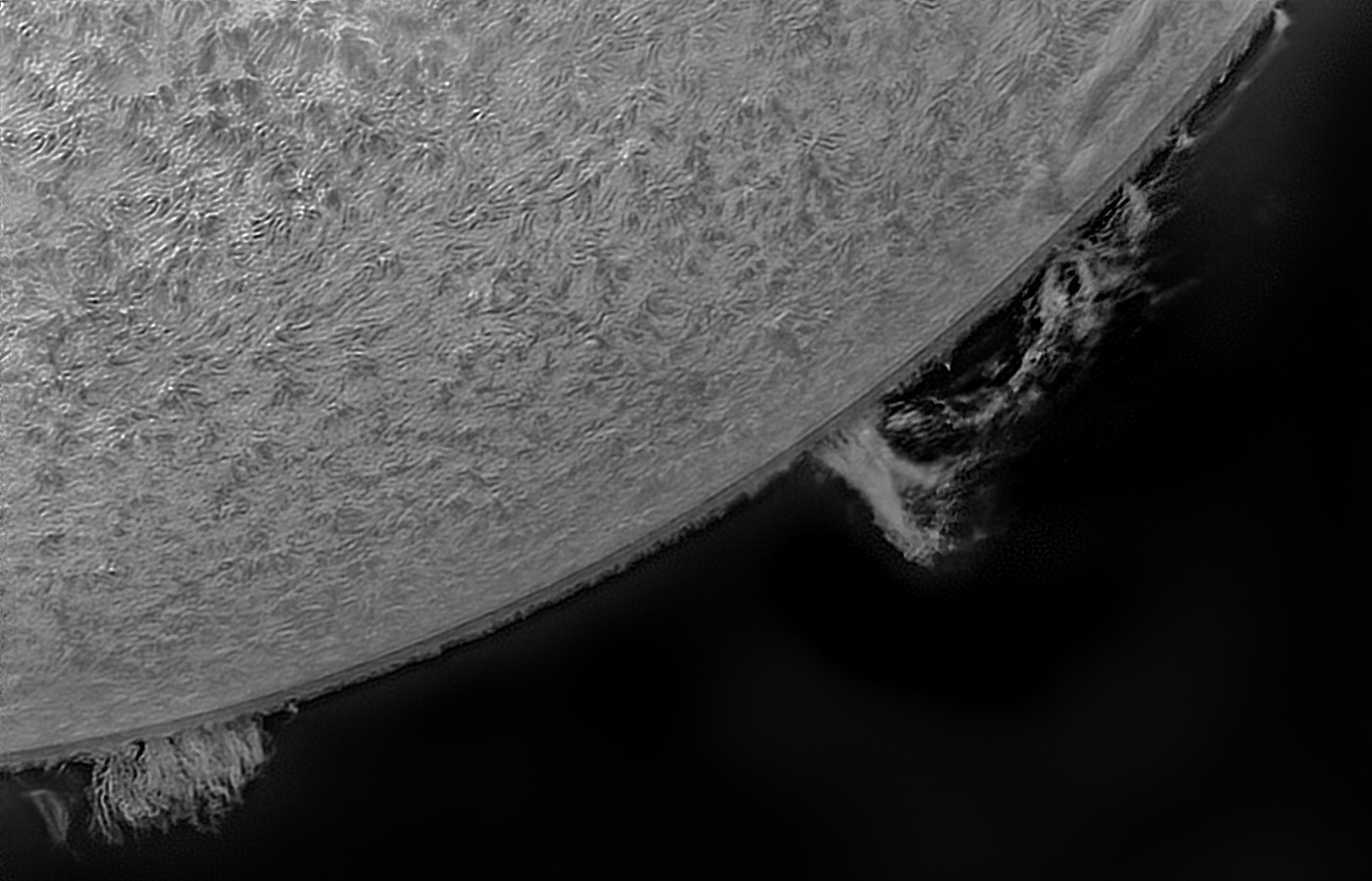
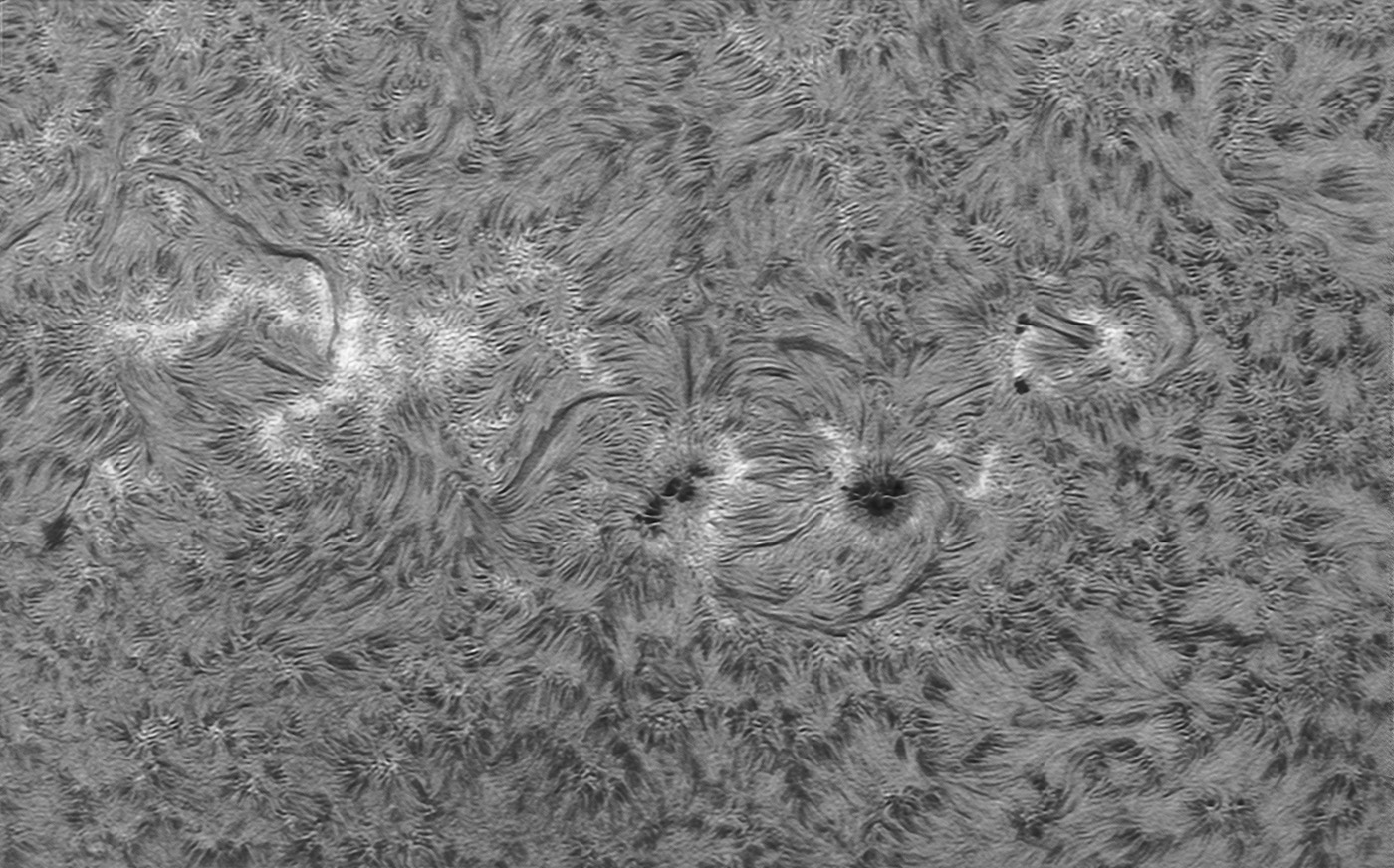
Interesting thing: the limb photo grabbed with a frame rate of about 25 fps. In 40 seconds, there's appreciable blur between the towers. I deconvolved that region to remove motion blur. This is a lovely problem to have because I can only have it with good resolution in good seeing.
I want to take another cut at full-disk imaging with the Quark but I do not want to pay for Daystar's compressor or for their Canon lens adapter. I've got an eyepiece adapter on the way which allows the use of 1.25-inch eyepieces behind Canon lenses. I'm not sure why I can't put the snout of the Quark there. There maybe some spacing issues, but it was cheap and it's worth a try.
8/17/2023. Another day, another look. Two of these are 2-panel mosaics. The slightly disappointing one of god's own iron filings is a single shot (I tweaked the focus after a couple more clips). All are the best 100 of 1,000 frames.
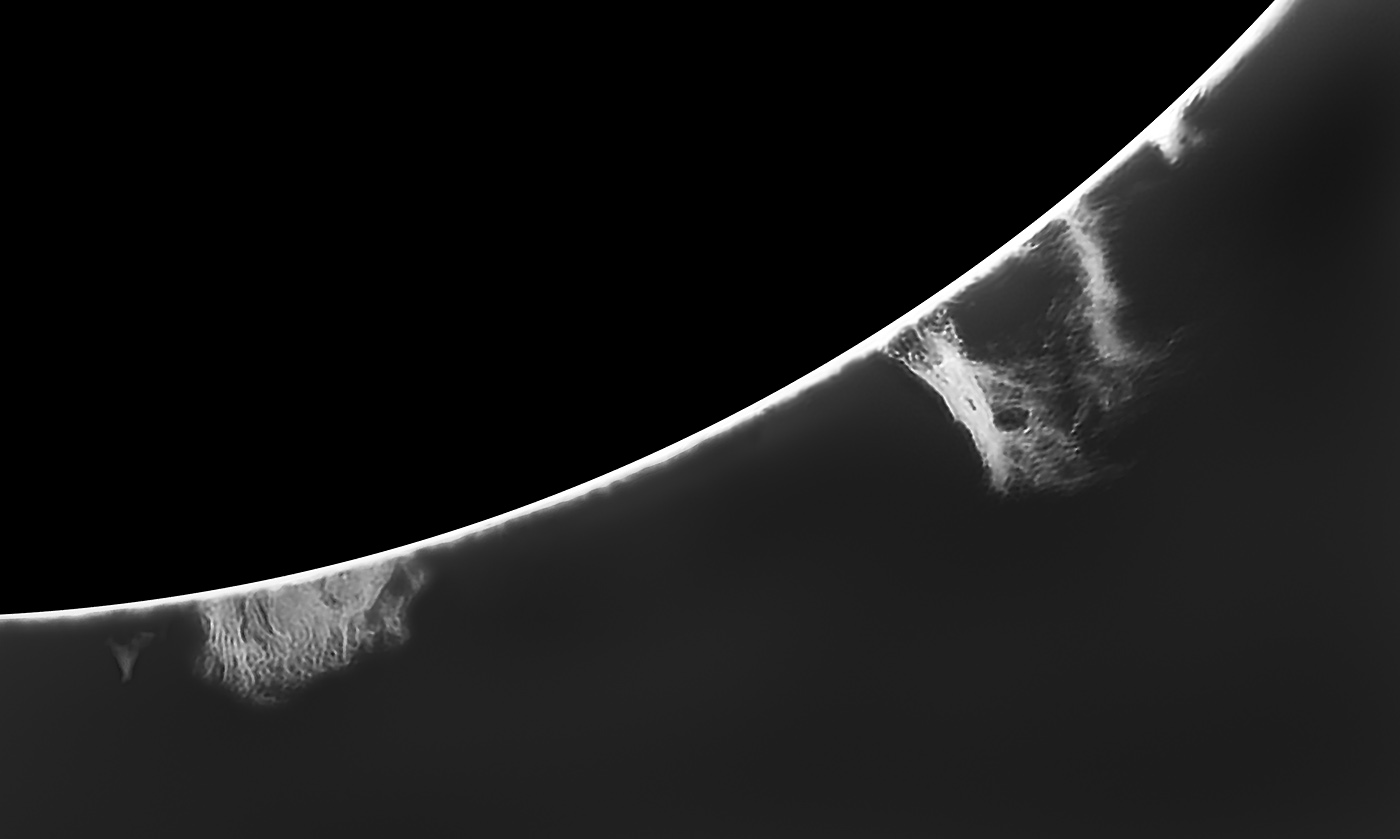
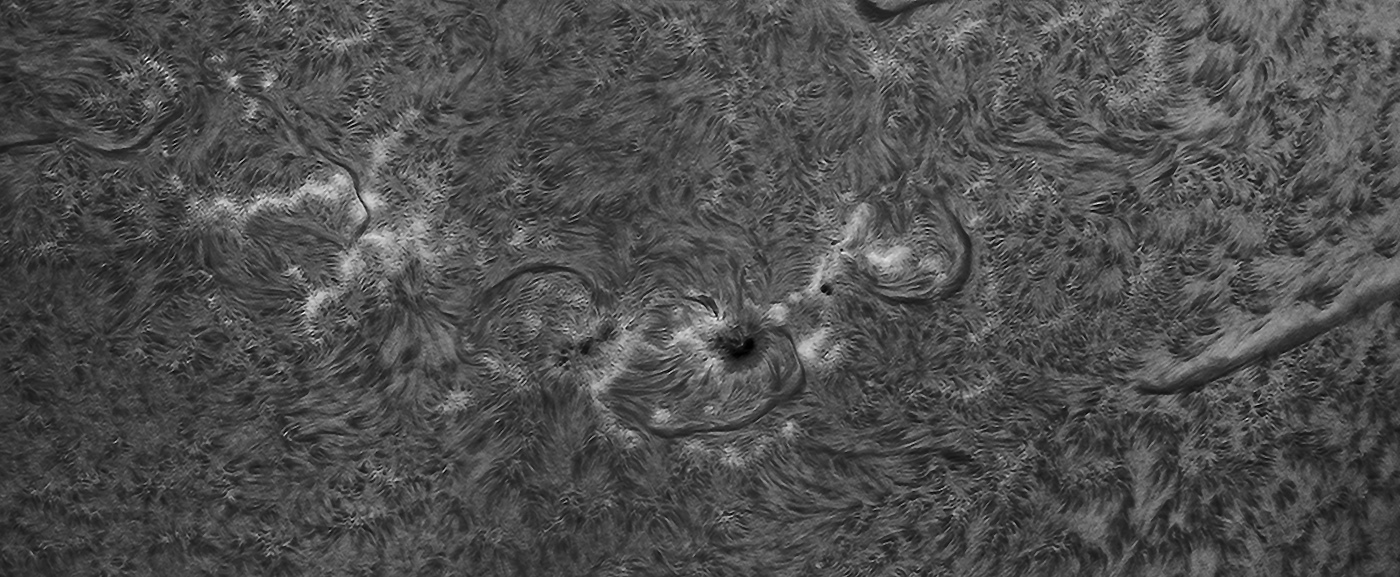
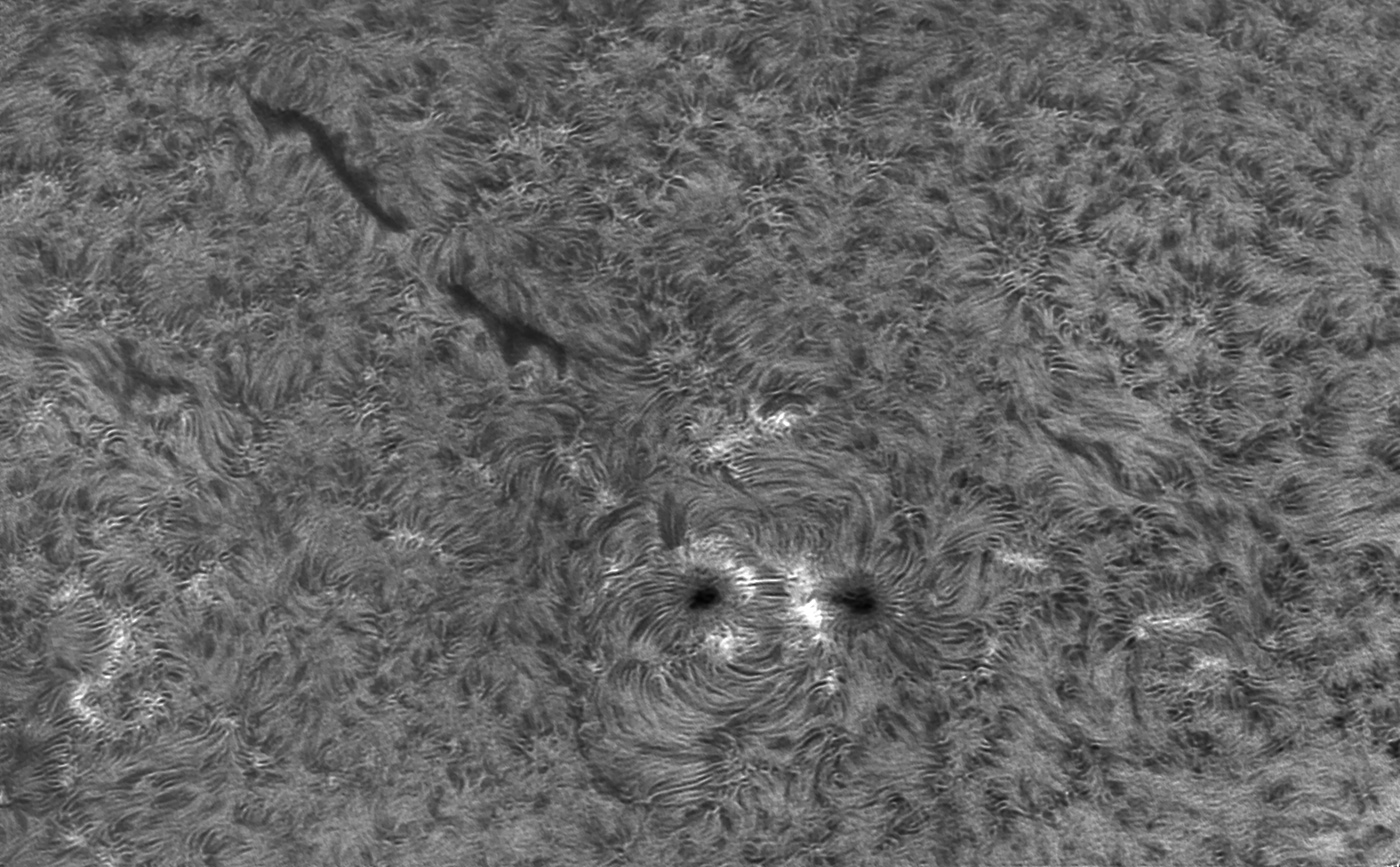
2023/08/18. The seeing was predicted to be fair to mediocre; the Sun was close above the roof. I figured it was a good chance to find out how much difference that really made when doing aggressive lucky imaging. Less than I expected, actually. First is a two-panel mosic north and south, the rest are single clips (150 and 200 from 1,000 frames):
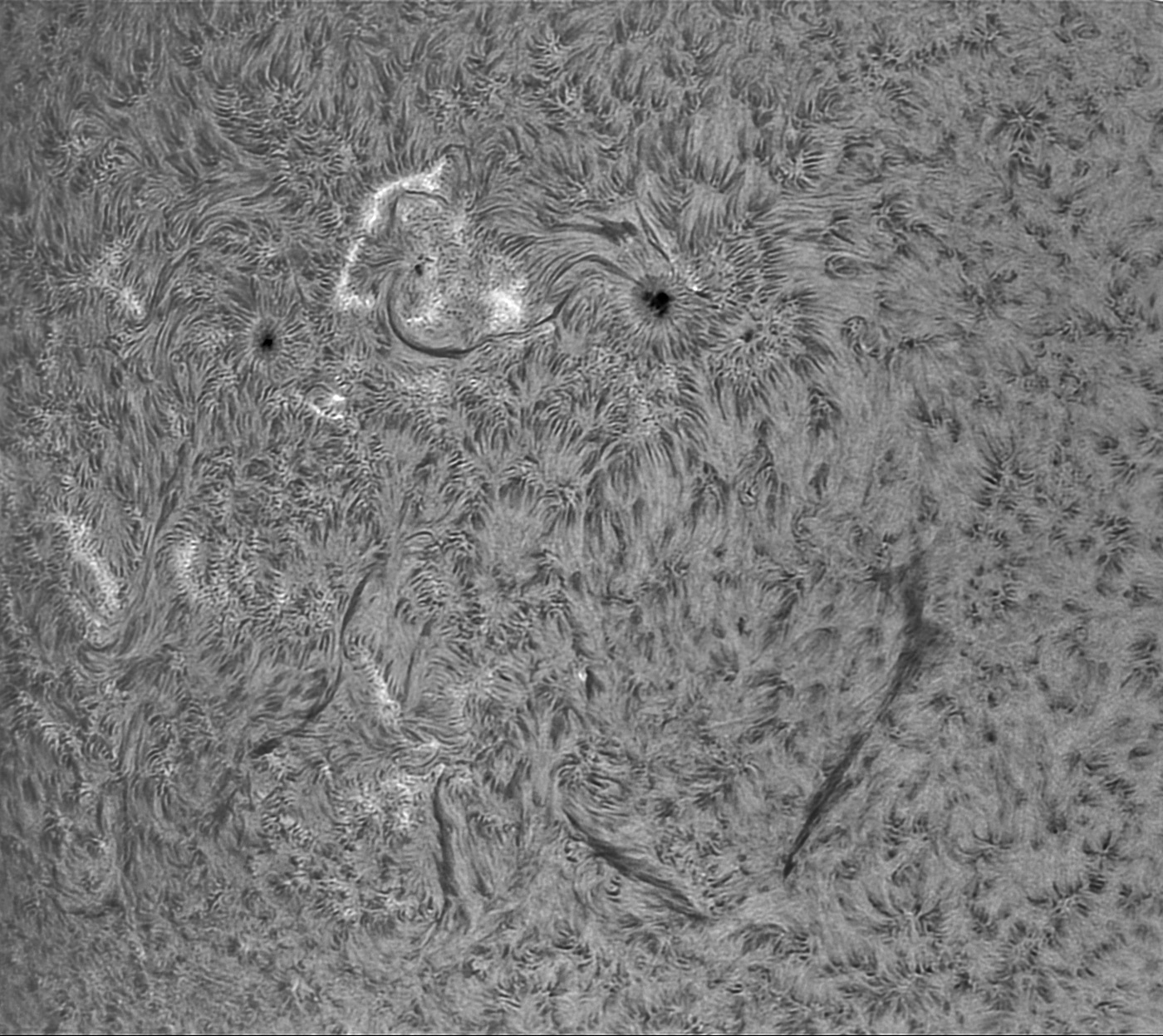
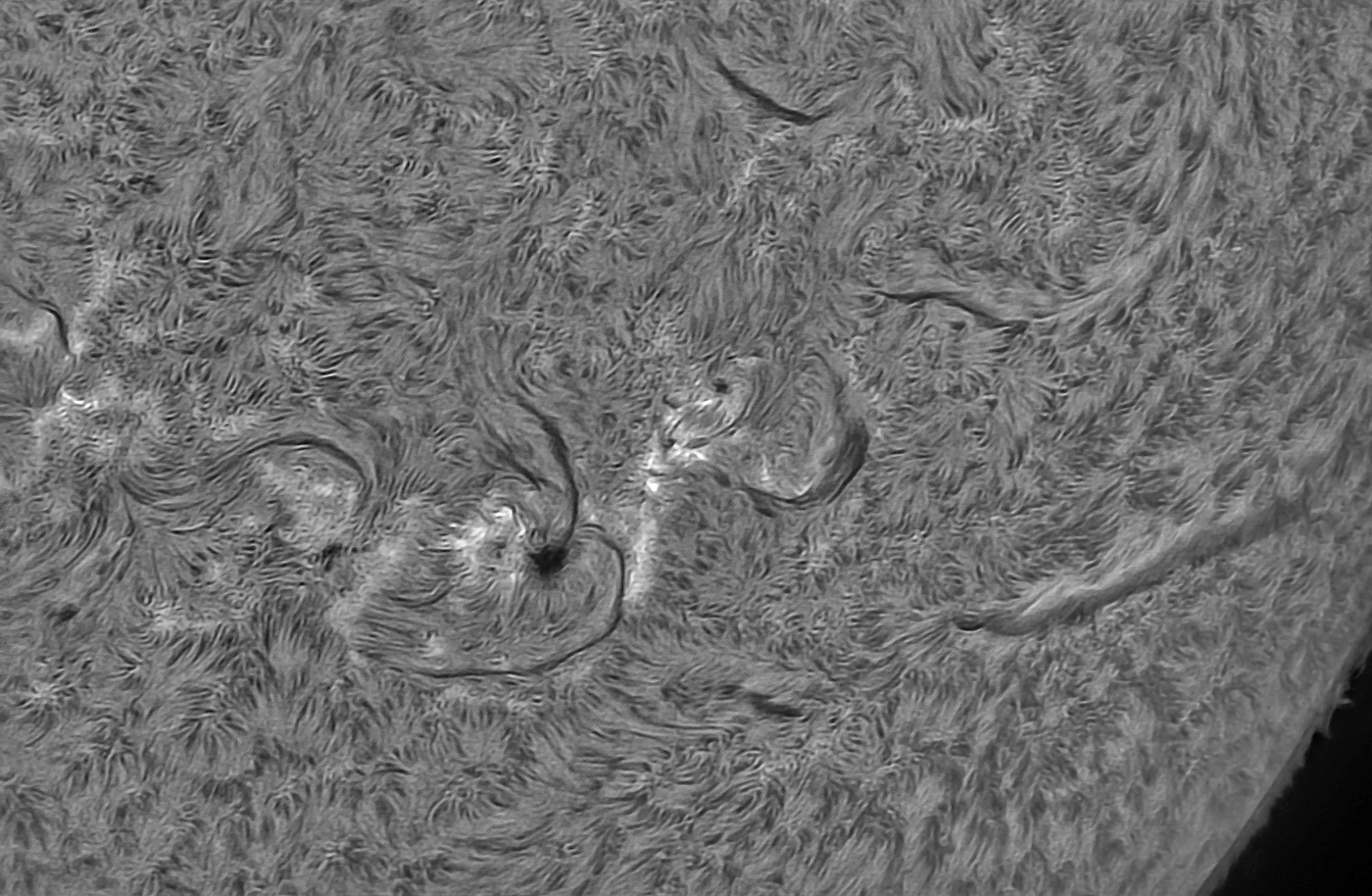
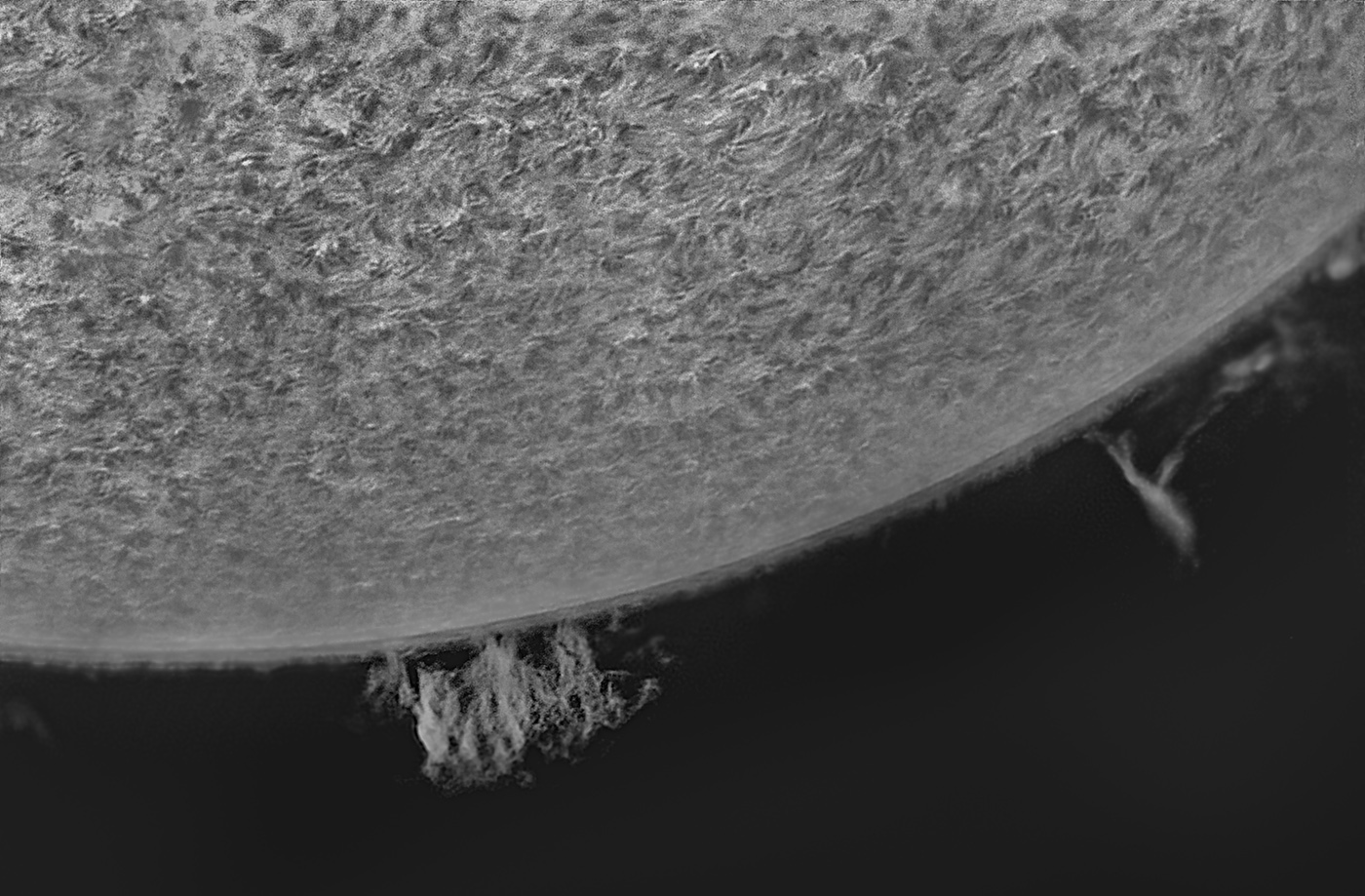
2023/08/20. Today featured a total failure to produce a full-disk image using Svbony's Canon eyepiece adapter. Naught but frustration this time out. Will regroup, rethink, and try this again. I don't think there is a good reason such an adapter should cost $400 from Daystar when this ought to work for $17.50, but I could be all wrong. Try a 105mm telephoto with M42 thread mount and an appropriate eyepiece adapter. Try the ASI1600MM behind the current outfit next (will probably require two frames to get a full disk, but two is OK). Since I had the filter, mount, and computer ready, I reassembled the TMB92 outfit following the full-disk fiasco and got a few close shots.
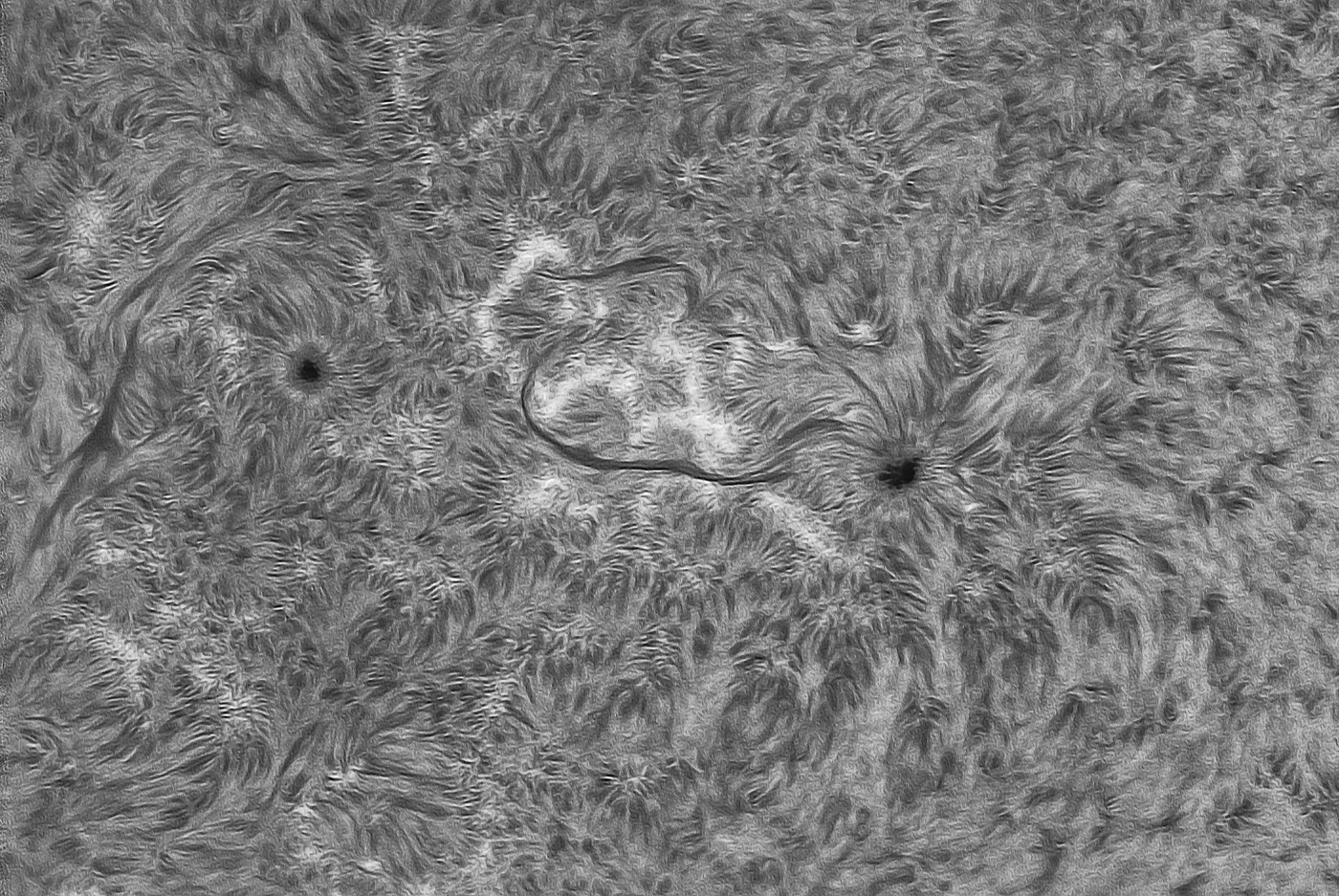
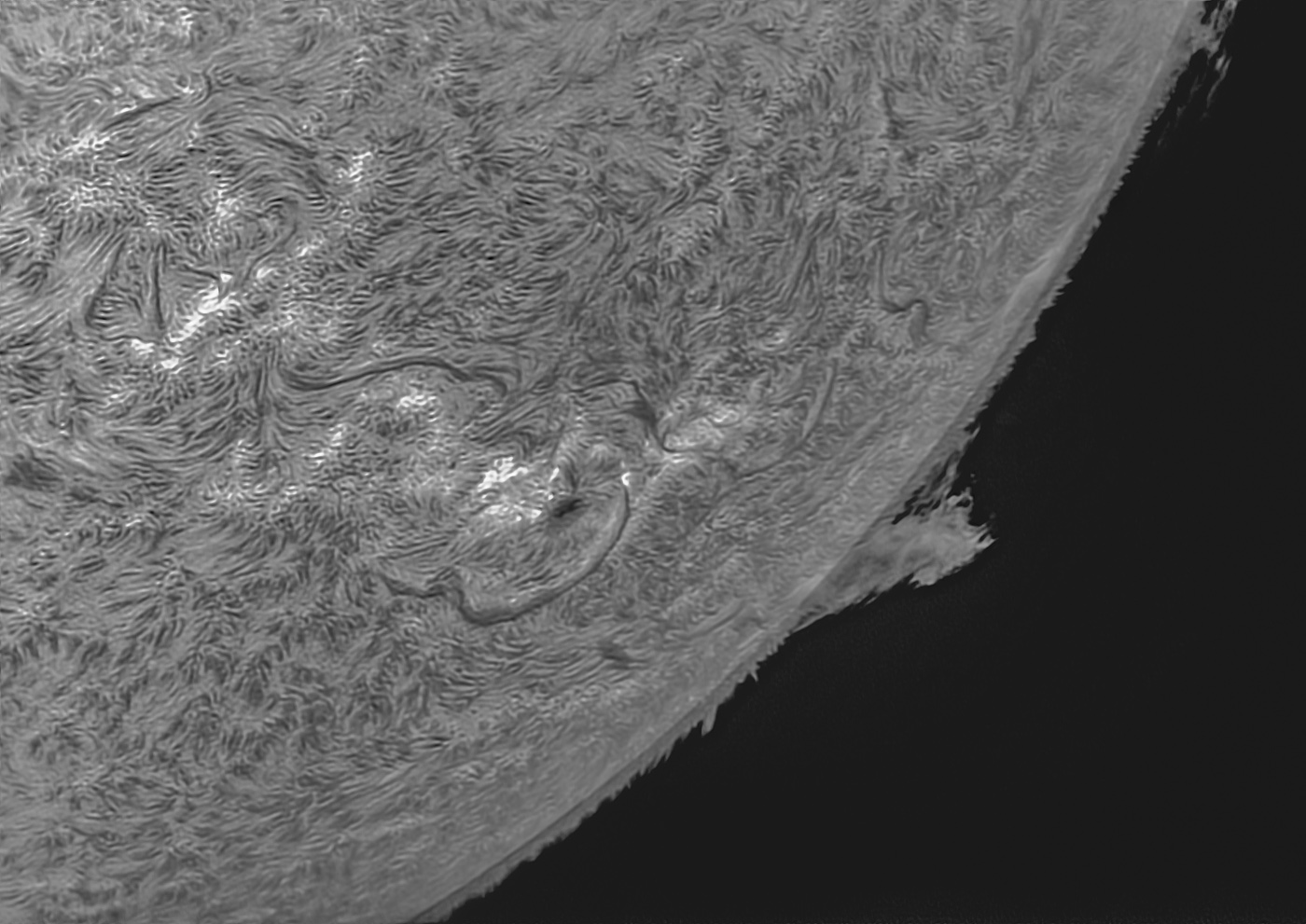
My solar images beginning in June 2023 are made using a Daystar Quark Chromosphere filter on a TMB92SS refractor. A 2" Baader 7nm Ha filter and an A-P dielectric diagonal provide extra IR protection. The camera (~2021 et seq) is a ZWO ASI178MM chosen for its tiny pixels and fast capture rate. It is notorious for a nasty pattern noise which can be avoided with careful exposure or removed using FFT-based processing. I capture
data using FireCapture, stack using AS!3, deconvolve and perform initial histogram adjustments using IMPPG, and polish in Photoshop. The solar kit is mounted on a Skywatcher Star Adventurer "tracking platform."
:: top ::